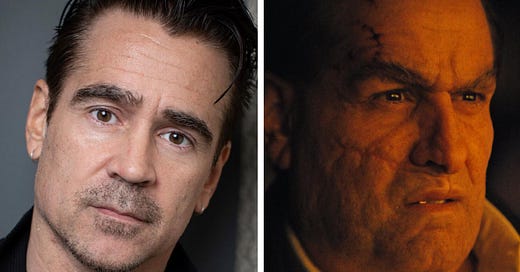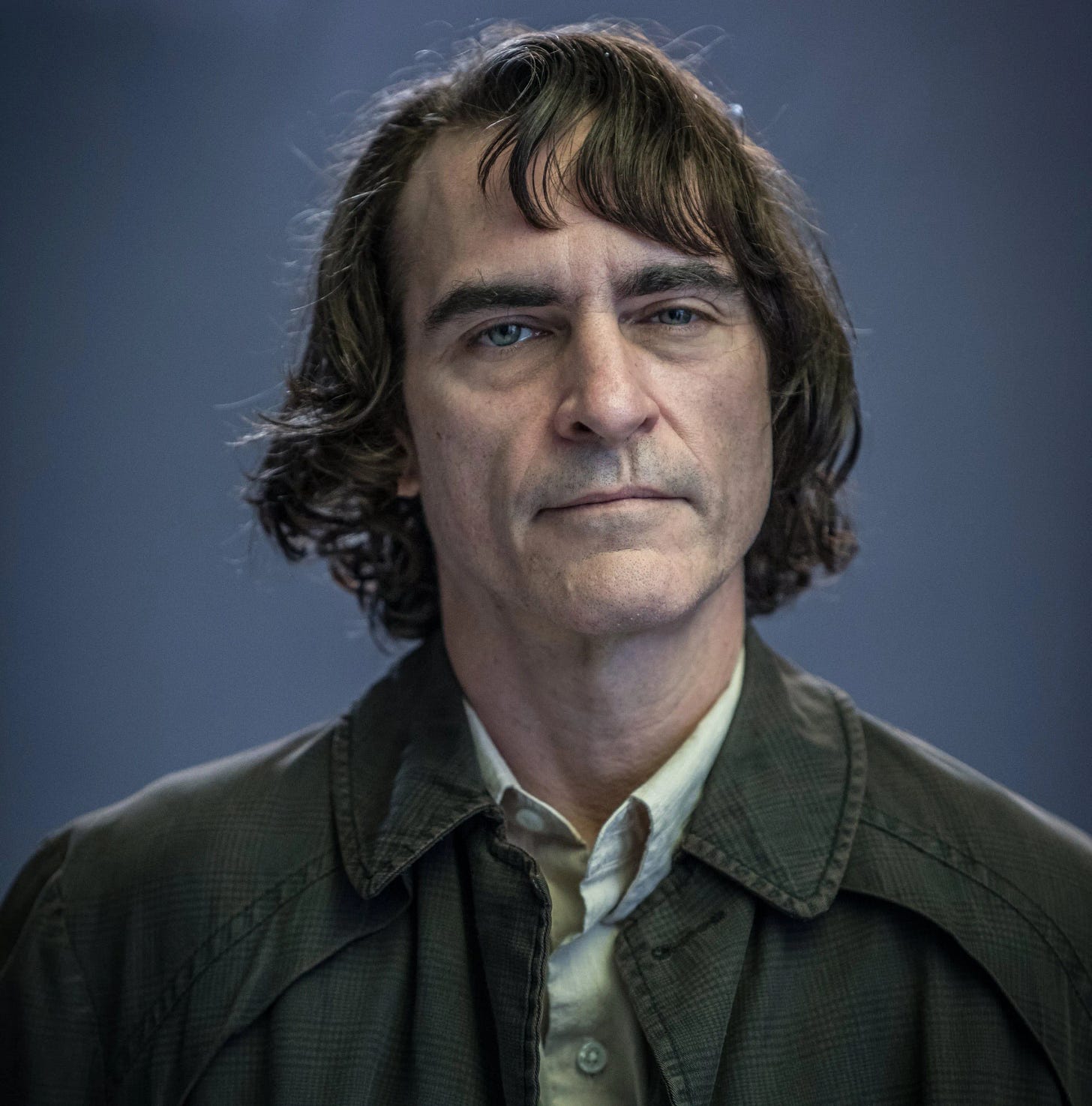Disfigurement becomes Farrell apparel in The Penguin
Batman, the disfigured villain trope & mistaking prejudice for empathy
As Colin Farrell returns as Batman’s fowl foe in HBO’s The Penguin, I wanted to revisit a press interview for The Batman (2022), where he discussed what makes his character tick.
The following clip is a good example of how people equate facial disfigurement with immorality (the ‘disfigured villain’ trope) and how writers/actors/audiences often mistake this prejudice for empathy.
“[He] had dreams about power - dreams about of getting out from beneath the shadow of his own… disfigurement. And how he had been judged as well for looking… the way he looks. [He has] compensated through the use of violence… in a world that’s been very hard for him to deal with.”
While some might believe these sentiments demonstrate empathy for a character's suffering, they unfortunately reinforce the idea that disfigurement is inherently connected to moral corruption. Expecting marginalised people to behave badly BECAUSE they are discriminated against, is just prejudice masquerading as empathy. It’s a prejudice of low expectation and just another way of believing that marginalised people or, in this case, facially disfigured individuals, are perpetually bad.
Modern interpretations of the caped crusader are often ‘grounded’ - which, in Batman terms, means campy, villainous theatricality is explained using real world prejudice. Nicholson’s and Ledger’s Jokers aren’t simply silly, grinning clowns - they are facially disfigured. Farrell’s and DeVito’s portrayals of The Penguin are also very visibly disfigured. Two-Face… you get the idea.
Interestingly, Joaquin Phoenix is one of the few live-action Jokers who doesn't use facial disfigurement as a motive, despite the actor having a microform cleft lip. Instead, his interpretation of the character in Joker (2019) focuses entirely on mental illness, trading one stereotype for another.
Negative assumptions about the mentally ill, disabled, and facially disfigured are employed by writers to add 'plausibility' to the Batman universe, making its otherwise absurd elements more believable for audiences, helping them take the absurdities of Batman seriously. It undeniably works… after all, what is prejudice if not an absurdity taken seriously?
Additionally, Penguin was not the only disfigured or visibly different character planned for Matt Reeves’ The Batman universe. Barry Keoghan is set to be the latest actor to play the Joker.
“He has a kind of congenital disease that refuses to let him stop smiling, and he’s had this very dark reaction to it.”
Its rather bizarre to hear Matt Reeves talking about a disfigurement turning a character evil, as if that’s a novel idea. This trope is not sophisticated character writing; it’s an age-old, off-the-peg stereotype.
Given that Gotham's villains are a motley crew of unPC stereotypes, it could be argued that film adaptations are merely being faithful to the source material. Amusingly, Warner Brothers removed the Penguin’s iconic smoking habit from The Batman (2022).
“I fought valiantly for a cigar. I even, at one stage, said, ‘I can have it unlit! Just let me have it unlit’, and they were like, ‘NOOO!!’.”
Hmmm… so it IS possible to drop certain character traits, IF you regard them to be irresponsible. Good to know lol
If you’d like to learn more about the disfigured villain trope and it’s impact, feel free to check out this piece I wrote for iNews.
I may write more about Batman in the future; I adored it as a kid. Farrell's comments highlighted a rationalisation of this trope that often goes unaddressed in write-ups (including my own), so I just wanted to share some thoughts.







